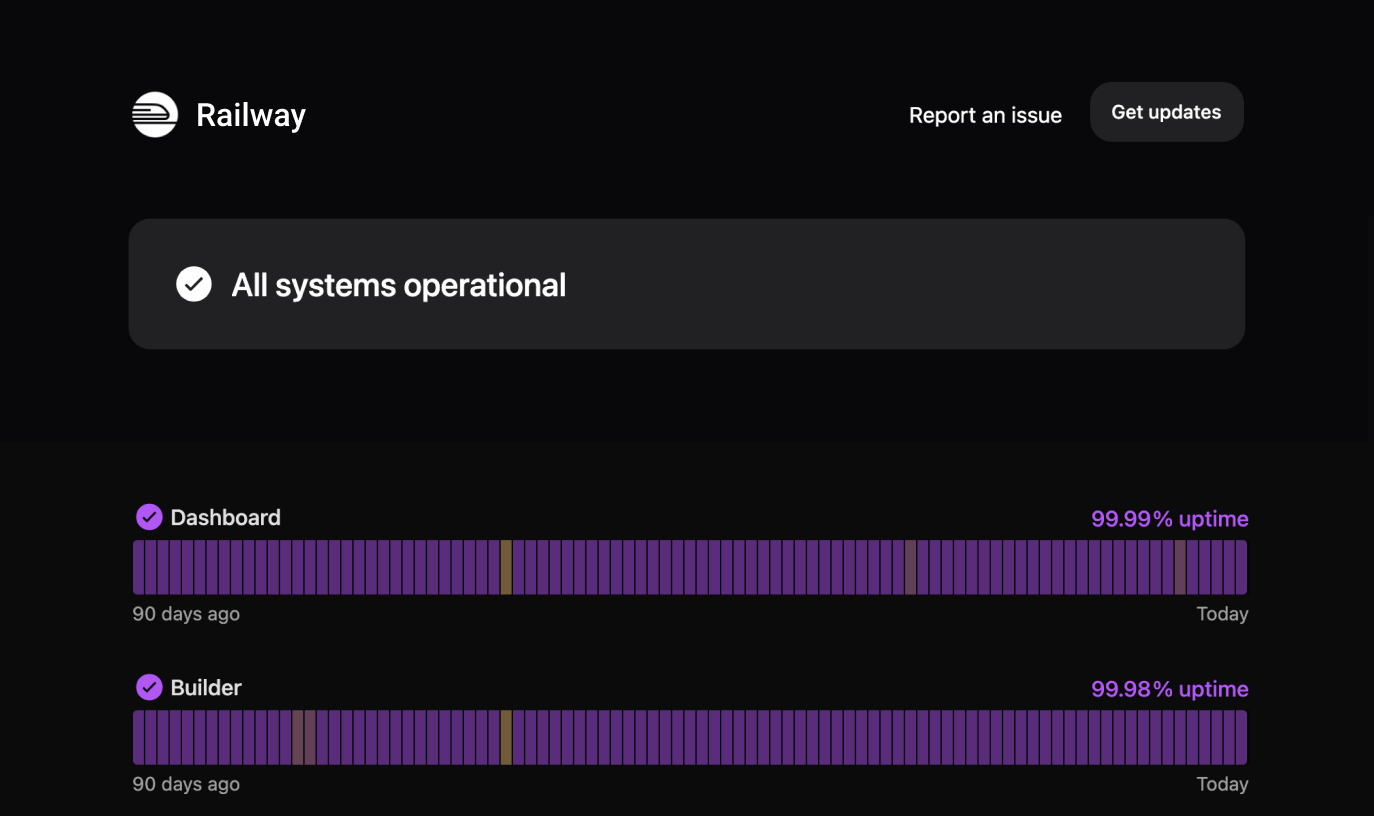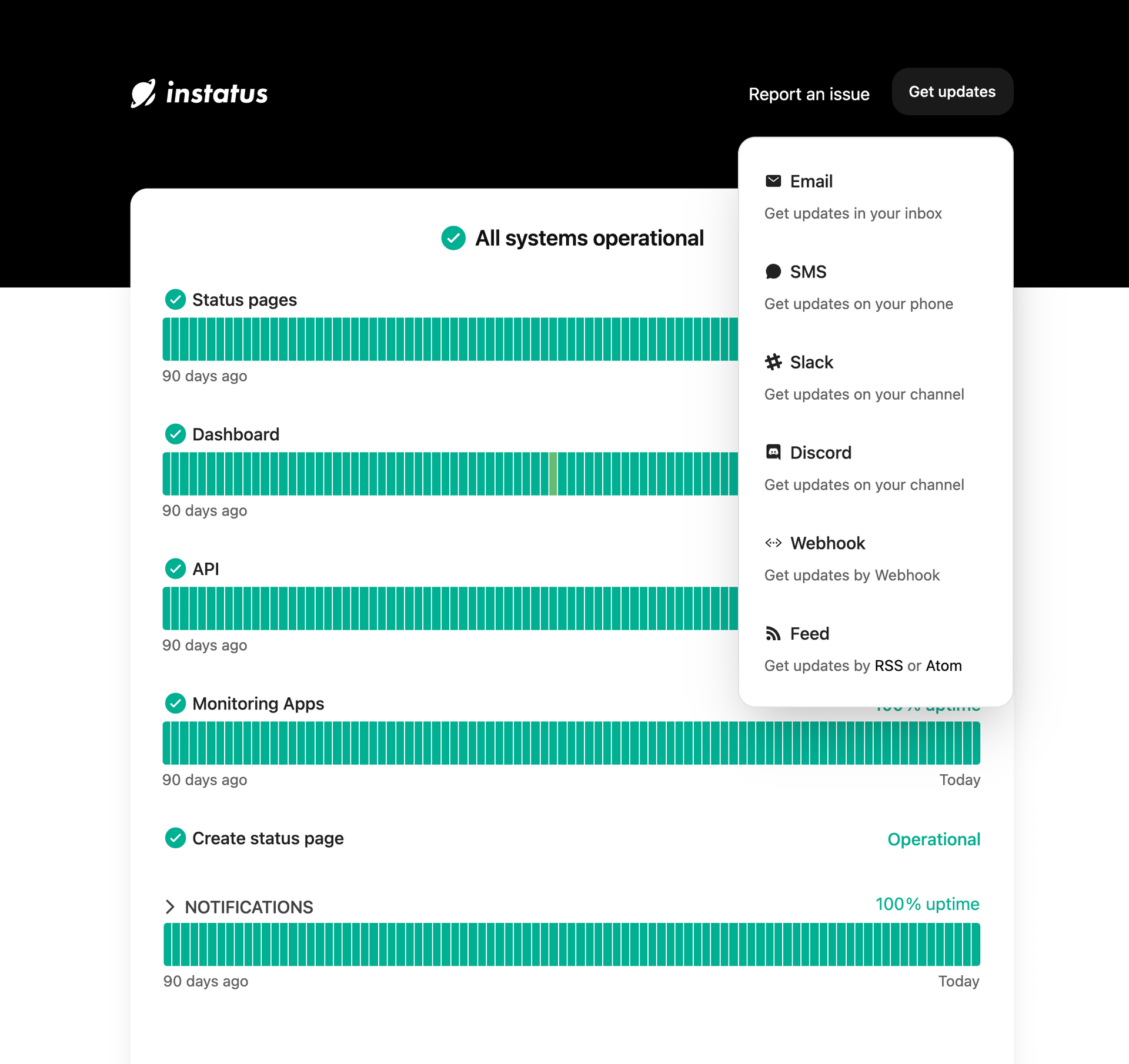Seven Ideas to Improve Your DevOps Strategies and How to Implement Them

If you’ve been part of the software development world for long, you understand the struggle for developers and IT, or operations, to work together well. In most organizations, it’s common for developers and organizations to operate like opposing currents. They clash and sometimes hinder each other. When channeled in the same direction, developers and operations teams can become a powerful force for achieving organizational goals. This is where an effective DevOps strategy comes into play.
While tools like Instatus can provide your company with the resources it needs to keep customers satisfied when things go wrong, the goal is to avoid possible wrinkles and hiccups in the process. In this article, we’ll take a deep dive into the DevOps approach, including what it is, why it’s essential, and the steps for successfully implementing a DevOps strategy in your organization.
What is DevOps?
The term “DevOps” has only been introduced to the development world in the past couple of decades, but has quickly become a popular term among software development organizations. So what does the term “DevOps” mean, exactly?
DevOps is simply a combination of “Developers” and “Operations”. It’s a software development strategy designed to help the teams within an organization work together to create high-quality applications as quickly and efficiently as possible. While it sounds simple, a successful DevOps strategy involves several components, Which we’ll cover later.
Why is implementing a DevOps strategy important?

There are plenty of reasons why DevOps is crucial to a product’s success. So let’s examine a few of them:
Improved customer satisfaction
A DevOps strategy improves both speed and quality, which are essential for customer satisfaction. DevOps strategy helps steamline collaboration between different departments in new product development and automates certain areas of the software development lifecycle. This often results in faster releases, better product quality and reduced time to market. All of which are sure to keep your customers happy.
It’s important to remember that even with a successful DevOps strategy, bugs and software issues will inevitably arise. That’s why it’s important to have back up mechanisms in place to keep customers happy and maintain their confidence in your organization. With Instatus, you can create a professional, user-friendly status page to give your users the best experience, even during downtime.
Speed up the SDLC
Few things will disappoint customers more than late releases or delayed bug fixes. Creating a successful DevOps strategy will help your team increase efficiency and improve the software development life cycle. One of the goals of implementing a DevOps strategy is to make the software development lifecycle as short as possible. By automating aspects of the process where possible, improving collaboration between teams, and continuously evaluating performance, overall production speed increases without any sacrifices to quality.
A good example of this is Application Release Automation (AMA). AMA is the process of packaging and deploying an app or update from development to production. It can help assist teams in implementing continuous implementation, where they try to release software in short cycles.
Improves code reliability
A successful DevOps strategy takes advantage of helpful tools to assist with configuration management and helps to keep code robust, even when there are changes to supporting libraries and other code. Some examples of these tools include CI/CD applications like Bamboo or Jenkins.
Any developer knows that even when you’ve done your best to prepare, it’s essential to expect the unexpected. This means preparing with a fallback for when your code breaks. Instatus allows you to create a user-friendly, attractive status page for your users during downtime. Support teams need a status page so they don’t get bombarded with tickets, which can help streamline the troubleshooting process.
Six DevOps strategies to test in your organization
Now that you understand what a DevOps strategy is, it’s time to dive into some strategies you can test in your organization. Below, we’ve gathered six of the best DevOps testing strategies for your organization:
6. Infrastructure as a code
Infrastructure as a code is an approach for adding as much automation as possible to your organization’s infrastructure. IT’s greatest nightmare is managing all the manual configuration settings possible across an organization. However, with infrastructure as a code approach, it’s possible to avoid this problem.
To avoid manual configuration settings that are difficult, or even impossible to reproduce, infrastructure as a code creates a standard environment state in your IT infrastructure. This standardizes the process across your organization and makes it easier to modify, which helps to reduce errors and improve your infrastructure consistency.
5. Continuous integration
Continuous integration is an approach that helps achieve quality, speed, and increased automation in the development process. Rather than submitting large blocks of code periodically, with a continuous integration strategy, developers commit code in small increments. When the developers do this, it merges with an online code repository after undergoing automated tests.
One of the benefits of continuous integration is that developers find and resolve bugs much more quickly. Rather than building large pieces of code before testing and committing, developers commit their code every few hours, revealing bugs throughout the process. It’s also important to note that hiring DevOps developersthat can not only write robust code, but adapt to these practices, is key to a successful DevOps strategy.
4. Continuous delivery
Continuous delivery is closely related to continuous integration. It’s a strategy designed to increase delivery speed of code through automation, and has to do with preparing code for release in small increments rather than large pieces. When a developer commits a piece of code, it is automatically compiled and tested to be ready for release.
The goal of a continuous delivery approach is to release code as rapidly as possible while decreasing the manual effort needed.
3. DevSecOps
As you can guess from the name, DevSecOps includes security as part of the software development life cycle from the beginning. Often, development teams leave security at the end of the development pipeline. This can increase development cycles, which is counter-intuitive to the objectives of DevOps.
By implementing a DevSecOps approach, security teams are included in the development process from the outset, collaborating with teams to provide information and set plans for security automation. This not only streamlines the feedback loop between the security and development teams, but developers will also create code with security in mind. That means security measures won’t have to be retroactively added later, which reduces the gap between release windows.
2. Microservice architecture
Microservices architecture is a modern application architecture designed to break code into small or microservices, that can function independently and are responsible for their own tasks. This strategy is beneficial because the independent services can be written by different developers, who are independent of each other.
This decreases the software development lifecycle and makes bug fixes and software updates easier, as each microservice is independent (i.e. if one breaks, the other microservices should continue functioning). Even the testing process is simplified, as each individual function can be tested by itself or simultaneously with another microservice.
1. Container management system
Another DevOps strategy that can improve your organization’s performance is developing a container management system. But first, what is containerizing?
Containerization bundles an app’s code with all the files and libraries it needs to run on any infrastructure. Containerizing is vital for ensuring that code won’t break in different environments. For example, containerized code should work in development, the testing environment, or after it’s released. Containerizing is a critical component of a DevOps approach because it reduces time spent on fixing broken code during the software development lifecycle.
If you’re going to put your code in containers, it has to be monitored and updated to ensure it remains compatible across infrastructures. Thankfully, there are a number of monitoring tools for DevOps that can help in this instance.
Rapid feedback
The goal of a DevOps strategy is to improve the software development lifecycle and quality of the release. Rapid feedback means quick communication between the organization’s teams with the goal of avoiding delays while one organization is waiting for approval or assistance from another. Rapid feedback is vital for your organization to perform as efficiently as possible.
In summary
Developing a successful DevOps strategy is imperative for your organization to remain competitive in today’s development world. A successful development strategy will improve your software development lifecycle, increase efficiency across your organization, and help to produce a higher-quality product. With the strategies highlighted in this article, your organization will be well on its way to improving the satisfaction and trust of your customers.
It’s important to remember that even with a successful and robust DevOps strategy, your organization needs to have a solid backup plan for when things don’t go exactly right. Instatus offers an elegant alternative to confusing error messages or pop-ups. You can also add a beautiful, easy-to-understand status page during downtime that will keep your customers satisfied and in the loop, even when the unexpected happens.
Try out Instatus today, by getting a free status page for your organization.
Get ready for downtime
Monitor your services
Fix incidents with your team
Share your status with customers



